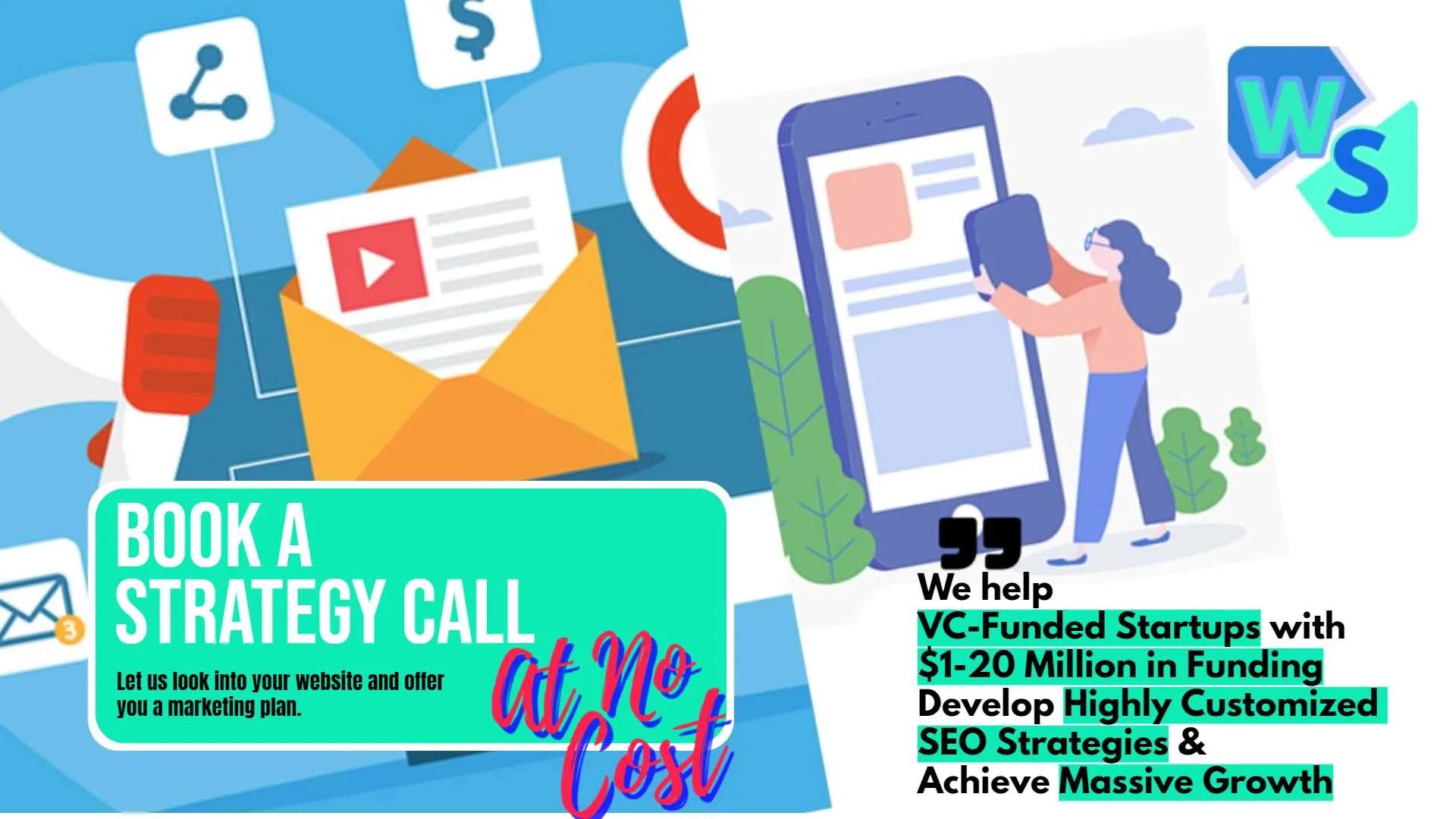In today’s fast-paced digital world, businesses are constantly seeking ways to improve efficiency and drive conversions. The sales funnel, which guides potential customers from awareness to decision, is the backbone of any successful marketing strategy. Yet, optimizing it has always been a challenge—until now. Enter machine learning, the revolutionary technology that’s transforming how businesses refine their sales funnels in real time.
Machine learning doesn’t just analyze data; it learns from it, identifying patterns, predicting outcomes, and recommending actionable steps to improve every stage of your funnel. Whether you’re struggling with lead qualification, nurturing, or closing deals, machine learning can deliver instant, data-driven solutions that keep your funnel flowing smoothly.
Let’s explore how machine learning can optimize each stage of your sales funnel, creating a seamless journey that turns prospects into loyal customers.
Step 1: Enhancing Lead Generation with Smarter Insights
The first step of any sales funnel is lead generation. But not all leads are created equal, and chasing after low-value prospects can waste time and resources. Machine learning solves this problem by analyzing historical data to identify patterns that indicate high-quality leads. It can examine factors like behavior, demographics, and engagement levels to pinpoint prospects with the highest likelihood of converting.
Identifying High-Value Prospects
For instance, if your past data shows that leads who visit your pricing page and download a whitepaper are more likely to buy, machine learning will prioritize similar behaviors in new prospects. This ensures your marketing efforts are laser-focused on leads that matter most.
With smarter lead identification, machine learning helps you fill your funnel with prospects who are ready to take action.
Optimizing Lead Capture Forms
Lead capture forms are a critical touchpoint in the funnel, but poorly designed forms can cause drop-offs. Machine learning can analyze user interactions to determine which form elements are causing friction and recommend improvements. For example, it might identify that asking for a phone number reduces submissions, while a simpler form with just name and email increases completions.
Moreover, machine learning can dynamically adapt forms based on the user’s context. A mobile user might see a shorter form optimized for smaller screens, while a desktop user gets a more detailed version. These subtle adjustments make the lead capture process more efficient and user-friendly.
Optimized forms ensure that you capture more leads without sacrificing quality.
Predicting Lead Sources
Machine learning excels at identifying which channels generate the best leads. By analyzing data from ads, social media, email campaigns, and organic traffic, it can predict which sources are most likely to bring in high-value prospects. For example, it might reveal that your LinkedIn campaigns generate more qualified leads than Instagram ads.
This insight allows you to allocate your budget more effectively, doubling down on the channels that deliver results. Over time, your lead generation efforts become more targeted and cost-efficient, filling your funnel with prospects who are more likely to convert.
Predictive insights ensure that your lead generation strategy is always optimized for maximum ROI.
Step 2: Streamlining Lead Qualification

Lead qualification is often a bottleneck in the sales funnel. Machine learning streamlines this process by automating lead scoring. Instead of manually evaluating leads, machine learning assigns scores based on data like engagement history, browsing behavior, and demographic fit. For instance, a lead who opens multiple emails and schedules a demo might receive a high score, while a lead with minimal interaction gets a lower score.
Automating Lead Scoring
This dynamic scoring system ensures that your sales team focuses on the most promising leads, saving time and increasing efficiency. Unlike traditional methods, machine learning adapts in real time, adjusting scores as new data comes in.
Automated lead scoring keeps your sales team laser-focused on closing deals.
Identifying Intent Signals
Machine learning doesn’t just evaluate leads—it identifies intent signals that indicate readiness to buy. For example, it might recognize that a lead visiting your pricing page three times in a week is more likely to convert than one who casually browses your blog. These signals help your team prioritize outreach and tailor their messaging to each lead’s specific needs.
Moreover, machine learning can group leads by intent, allowing you to create personalized nurturing campaigns. High-intent leads might receive a direct sales pitch, while lower-intent leads get educational content to build trust.
Recognizing intent ensures your team engages leads at the right time with the right message.
Minimizing False Positives
One of the biggest challenges in lead qualification is avoiding false positives—leads that seem promising but never convert. Machine learning reduces this risk by analyzing a broader range of data points and identifying patterns that humans might miss. For instance, it might flag a lead as low quality if their engagement pattern doesn’t match those of previous successful conversions.
This reduces wasted effort and ensures that your sales team spends their time on leads that are truly worth pursuing. Over time, machine learning’s ability to refine its predictions improves, making your qualification process more accurate and efficient.
Minimizing false positives ensures your resources are spent where they’ll have the greatest impact.
Step 3: Optimizing Lead Nurturing

Lead nurturing is all about building relationships, and personalization is key. Machine learning enables you to deliver personalized content at scale by analyzing each lead’s preferences, behaviors, and stage in the funnel. For example, it might recommend sending a case study to a lead researching solutions or a discount offer to one nearing a purchase decision.
Personalizing Content at Scale
This level of personalization creates a more engaging experience, increasing the likelihood that leads will progress through the funnel. Unlike manual approaches, machine learning ensures that every lead receives relevant, timely communication without overwhelming your team.
Personalized nurturing turns passive leads into active opportunities.
Automating Follow-Ups
One of the most common reasons leads drop out of the funnel is lack of timely follow-up. Machine learning automates this process, ensuring that no lead slips through the cracks. For instance, if a lead downloads a guide but doesn’t respond to follow-up emails, machine learning might trigger a chatbot to re-engage them with a tailored question or offer.
These automated follow-ups are designed to feel personal, leveraging data to create messages that resonate. Whether it’s an email, SMS, or chatbot interaction, machine learning ensures that every touchpoint moves leads closer to conversion.
Automated follow-ups keep your leads engaged without manual intervention.
Predicting Optimal Engagement Times
Timing is everything in lead nurturing. Machine learning analyzes engagement patterns to determine when your leads are most likely to respond. For example, it might identify that a particular lead prefers to interact with emails in the evening, while another responds better to morning calls.
By optimizing the timing of your outreach, machine learning ensures that your messages land when leads are most receptive. This small adjustment can have a big impact on open rates, click-through rates, and ultimately conversions.
Optimal timing maximizes the effectiveness of your nurturing campaigns.
Step 4: Accelerating Conversions

As leads near the decision stage, the right offer can seal the deal. Machine learning analyzes past conversion data to recommend the most effective offers for each lead. For example, it might suggest a free trial for one lead and a 10% discount for another based on their behavior and preferences.
Tailoring Offers in Real Time
These tailored offers are delivered at the perfect moment, increasing the likelihood of conversion. Machine learning can even A/B test different offers in real time, optimizing for what works best.
Tailored offers create urgency and drive faster decisions.
Reducing Friction in the Checkout Process
Friction in the checkout process is a common reason for lost conversions. Machine learning identifies where customers drop off and recommends improvements. For instance, it might suggest simplifying the payment form, adding trust badges, or offering multiple payment options.
By addressing these pain points, machine learning creates a smoother, more intuitive checkout experience. This not only increases conversions but also leaves customers with a positive impression of your brand.
Reducing friction ensures that your hard-won leads make it through the final stage of the funnel.
Predicting Churn and Acting Proactively
Even after a lead converts, the risk of churn remains. Machine learning predicts which customers are at risk of disengaging based on usage patterns, satisfaction scores, and other factors. For instance, if a SaaS user hasn’t logged in for two weeks, machine learning might trigger a retention campaign with helpful tips or incentives to re-engage.
Proactive action keeps your customers engaged, ensuring that your sales funnel doesn’t just generate new business but also retains existing clients.
Predictive retention strategies turn one-time buyers into loyal advocates.

Related: Check out our free tools:

Step 5: Scaling Your Sales Funnel with Machine Learning
As your business grows, so does the volume of leads entering your sales funnel. Managing this influx manually can quickly become overwhelming, leading to missed opportunities and inefficiencies. Machine learning scales effortlessly to handle large datasets, ensuring that every lead is scored, nurtured, and engaged effectively, regardless of volume.
Adapting to Increased Lead Volume
For instance, machine learning algorithms can prioritize high-value leads in real time, ensuring your team focuses on the prospects that matter most. Meanwhile, lower-priority leads can be added to automated nurturing workflows, keeping them engaged without requiring manual effort.
By scaling seamlessly, machine learning enables your sales funnel to grow alongside your business without compromising quality.
Expanding Across Markets and Segments
Machine learning doesn’t just help with volume—it also enables you to expand into new markets or customer segments. By analyzing data from different demographics, industries, or geographies, machine learning identifies patterns and preferences unique to each group. This allows you to tailor your approach, ensuring relevance and resonance.
For example, if you’re entering a new market, machine learning might reveal that leads in that region respond better to specific messaging or channels. You can use this insight to customize your campaigns, ensuring a higher likelihood of success.
Expanding into new segments with machine learning ensures that your funnel remains adaptable and effective across diverse audiences.
Continuous Optimization for Sustained Growth
Machine learning thrives on data, and the more it learns, the better it performs. As your funnel generates more leads and conversions, machine learning algorithms continuously refine their predictions and recommendations. This creates a cycle of improvement, where your funnel becomes more efficient and effective over time.
For example, if certain strategies underperform, machine learning can quickly identify the issue and suggest alternatives, such as optimizing ad copy or adjusting targeting criteria. These iterative improvements ensure that your funnel stays ahead of the competition and continues to deliver results.
Continuous optimization ensures that your sales funnel evolves with your business, driving sustained growth.
Step 6: Choosing the Right Machine Learning Tools

Not all machine learning tools are created equal, and choosing the right one starts with understanding your specific needs. Are you looking to improve lead scoring, optimize nurturing workflows, or predict customer behavior? Identifying your priorities ensures you select a tool that aligns with your goals.
Evaluating Your Needs
For instance, if lead scoring is your primary challenge, platforms like Salesforce Einstein or HubSpot’s predictive lead scoring feature might be ideal. For nurturing, tools like Marketo or ActiveCampaign offer robust automation powered by machine learning.
Choosing the right tool ensures you get the most value from your investment.
Integration with Existing Systems
The effectiveness of machine learning depends on its ability to integrate with your existing tech stack. Look for tools that seamlessly connect with your CRM, email marketing platform, and analytics tools. This ensures a unified view of your sales funnel and enables machine learning to analyze data from multiple touchpoints.
For example, integrating your CRM with a machine learning platform allows you to track the entire customer journey, from initial contact to conversion. This holistic approach provides deeper insights and more accurate predictions.
Integration ensures that machine learning enhances your existing processes rather than complicating them.
Measuring ROI and Scalability
Implementing machine learning is an investment, so it’s important to measure its impact. Track metrics like lead conversion rates, time-to-close, and customer acquisition costs to evaluate the effectiveness of your machine learning tools. Over time, these insights help you optimize your strategy and maximize ROI.
Additionally, consider scalability. As your business grows, ensure your chosen tools can handle increased lead volume, more complex workflows, and additional data sources without losing efficiency.
Measuring ROI and ensuring scalability keeps your machine learning strategy aligned with your business objectives.
Step 7: Overcoming Challenges in Machine Learning Implementation

One of the main hurdles in implementing machine learning is ensuring compliance with data privacy regulations such as GDPR, CCPA, and other region-specific laws. Machine learning thrives on data, but mishandling that data can lead to significant legal and reputational risks.
Addressing Data Privacy Concerns
To address this, businesses must establish clear policies for data collection, storage, and usage. Machine learning tools should work with anonymized or aggregated data whenever possible to minimize privacy risks. Additionally, obtaining explicit consent from users to use their data for personalization is critical.
Transparency and ethical data practices build trust with customers while keeping your machine learning strategies compliant and secure.
Mitigating Bias in Machine Learning Models
Machine learning models are only as good as the data they’re trained on. If your historical data contains biases—such as favoring certain demographics or underrepresenting specific behaviors—your machine learning predictions may perpetuate these biases.
To mitigate this, regularly audit your data and models to ensure fairness and inclusivity. Many modern machine learning platforms include bias-detection features that help identify and correct these issues. For example, if a model disproportionately scores certain leads lower due to incomplete demographic representation, adjustments can be made to balance the output.
Eliminating bias ensures that your sales funnel serves all prospects equitably, enhancing trust and conversion rates.
Aligning Machine Learning with Human Expertise
While machine learning is powerful, it should complement human decision-making, not replace it. Sales and marketing teams bring context and intuition that algorithms can’t replicate. For instance, a machine learning model might flag a lead as low priority based on limited interactions, but a salesperson might know that the lead represents a key account.
To maximize effectiveness, involve your teams in the implementation process. Train them to understand and use machine learning insights while encouraging them to provide feedback for model refinement.
The combination of human expertise and machine learning creates a balanced approach that maximizes the potential of your sales funnel.
Step 8: Future Trends in Machine Learning for Sales Funnels

As conversational AI tools like chatbots and voice assistants become more sophisticated, they’re playing a larger role in sales funnels. Machine learning powers these tools, enabling them to provide real-time assistance, answer queries, and guide leads through the funnel.
Conversational AI Integration
For example, a chatbot on your website can qualify leads by asking targeted questions and recommending relevant resources. These interactions are recorded and analyzed by machine learning algorithms, which refine the funnel based on recurring patterns.
The integration of conversational AI ensures that your funnel is always accessible, responsive, and engaging.
Predictive Analytics for Long-Term Strategies
Machine learning is evolving from short-term optimizations to long-term strategic planning. Predictive analytics tools now help businesses forecast sales trends, customer lifetime value, and market opportunities. These insights enable proactive adjustments to your sales funnel, ensuring you stay ahead of the competition.
For instance, if predictive models show a decline in conversions during specific months, you can preemptively launch campaigns to address this drop. Alternatively, you can identify untapped customer segments and tailor your funnel to target them effectively.
Long-term predictive analytics turns your sales funnel into a strategic advantage, driving sustained growth.
Multi-Channel Funnel Optimization
The future of sales funnels lies in seamless, multi-channel integration. Customers interact with businesses across various platforms—email, social media, websites, and apps—and expect a consistent experience. Machine learning enables real-time data synchronization and personalization across these channels.
For example, if a lead interacts with your brand on Instagram, machine learning can adjust their nurturing journey in your email campaigns to reflect their interests. Similarly, predictive insights can guide ad placement across platforms, ensuring maximum ROI.
Multi-channel optimization ensures that your sales funnel remains cohesive and effective, regardless of where customers engage.
Conclusion: Transforming Your Funnel with Machine Learning
Machine learning isn’t just a tool—it’s a transformation for how businesses approach their sales funnels. By enhancing lead generation, streamlining qualification, personalizing nurturing, and accelerating conversions, machine learning creates a seamless, efficient funnel that adapts in real time to meet your customers’ needs.
The best part? Machine learning does all this without requiring constant manual input, freeing your team to focus on strategic, high-value activities. With the right approach and tools, you can optimize your funnel from start to finish, driving faster, smarter conversions.
The future of sales is here, and it’s powered by machine learning. Start leveraging its potential today and watch as your funnel becomes a powerful engine for growth.
READ NEXT:
- Are Vanity Metrics Killing Your Marketing Efficiency? Here’s What to Track Instead
- Pinpointing Digital Marketing ROI: Why Your Metrics Aren’t Telling the Full Story
- Unlocking Real ROI in Digital Marketing: The Hidden Costs Draining Your Budget
- How Misaligned Marketing Funnels Are Blocking Your ROI Potential
- Best Digital Marketing Agency In Santa Ana, California
- Best Digital Marketing Agency In San Francisco, California





















